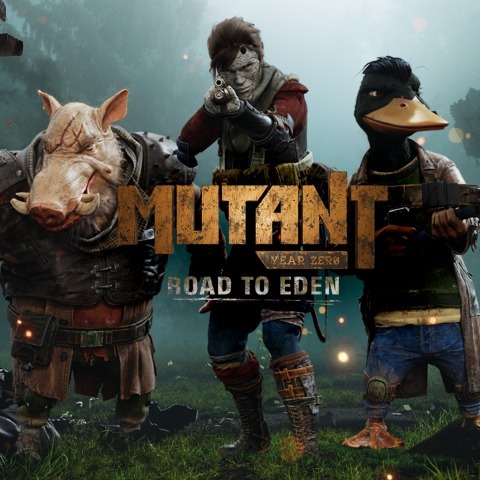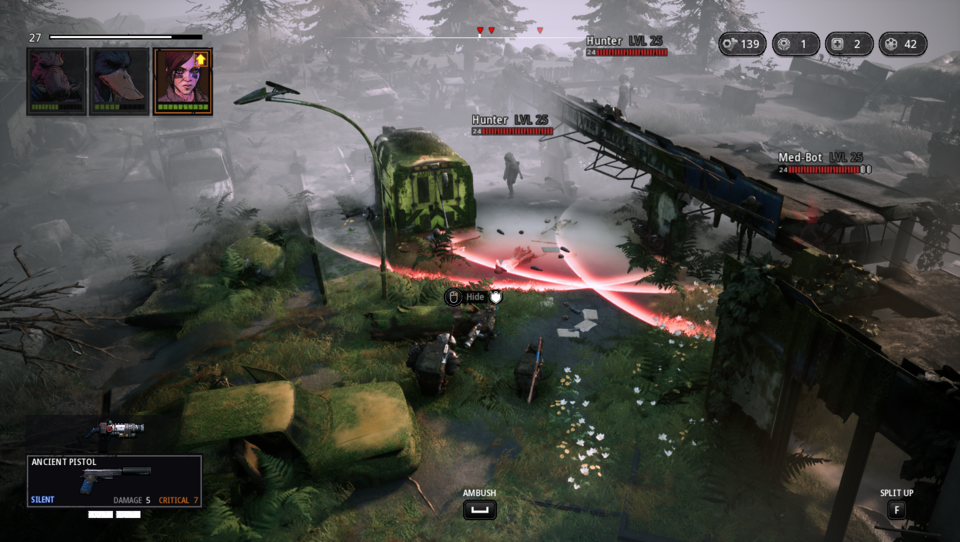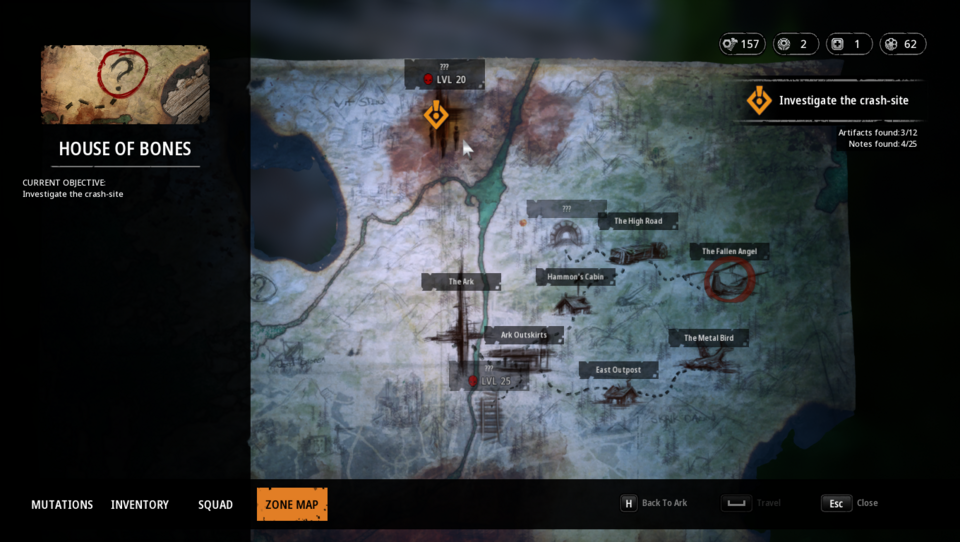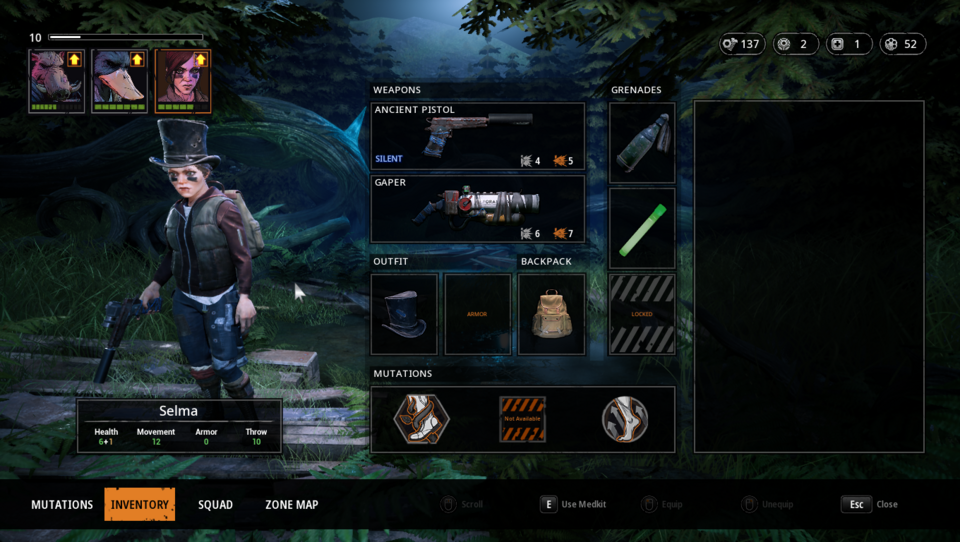Indie Game of the Week 312: Mutant Year Zero: Road to Eden
By Mento 0 Comments

I forget the context, but I was asked fairly recently about XCOM-likes. That is to say, tactical RPGs that have a focus on cover and stealth and careful judgment as integral mechanics for survival, and a generally higher difficulty all-around so as to make those features more a logical inclusion (otherwise you could just "go loud" for every battle and neglect them). I've personally never been a huge fan of this particular type of game because I get stressed out easily from the decision anxiety, annoyed from wasting so much time in unwinnable situations, and an instinctual aversion to save-scumming my way through games if possible, but I have to admit that this genre has seen some interesting developments ever since Firaxis more or less resurrected it with their 2012 XCOM: Enemy Unknown reboot. For one, I really enjoyed the Shadowrun Returns trilogy of games, that transplanted the same tense tactical combat into that setting's unusual mix of cyberpunk and fantasy, and so I've been considering trying a few other notable examples. One of those, to finally get to the point, is The Bearded Ladies' Mutant Year Zero: Road to Eden from 2018 (and what turned out to be a timely game to play, as their next project Miasma Chronicles is due to release in a matter of months).
Mutant Year Zero, based on the Swedish post-apocalyptic table-top RPG of the same name, sees a group of "mutants"—those given special gifts from the heavily irradiated world left behind by the Ancients (which is to say, us, as in modern humans, who accidentally blew everything up after a plague)—fight for survival against various factions including hostile ghouls and a death cult known as Nova Sect. The mutants and other humans live in a well-defended fortress named the Ark, though as the Ark constantly needs supplies and materials to keep itself operational the mutants with the best skills are regularly sent out on dangerous resource-gathering missions. The player controls two of these mutant "Stalkers", as they're called (possibly influenced by Roadside Picnic by Arkady and Boris Strugatsky, the basis of the thematically similar S.T.A.L.K.E.R. franchise), and soon picks up others as they find themselves hunting down the missing Hammon, an inventor and engineer instrumental to the Ark's continued survival. Bormin, a boar man, and Dux, a duck, are two squabbling mutants with pronounced animal characteristics that regularly volunteer for these missions as an excuse to get away from the suspicious eyes of their fellow Ark inhabitants, though through the course of this game find themselves in greater peril than ever before.

Off the bat, there are two semi-recent playthroughs that my time with Mutant Year Zero gave me distinct flashbacks to. The first of those was UnderRail, which I played for this feature as IGotW #229. UnderRail, like Mutant Year Zero, is a punishing RPG that demands not only a whole lot of luck and skill from its players but an uncommon level of resourcefulness. If you're like me, you probably have a blind spot for consumables in games: the type of items that vanish upon use, forcing you to consider hanging onto them for as long as possible to prevent a hypothetical future catastrophe where their absence is sorely felt. You can't afford to be quite so parsimonious in Mutant Year Zero, however, as many encounters are effectively unwinnable without them, or at least you'll end up burning through more valuable consumables without them (say, medikits to repair all the harm caused by not quickly clinching a decisive victory with a grenade or two). Likewise, many battles in both UnderRail and Mutant Year Zero are nigh-impossible due to juggling too many stronger foes at once; this is where the stealth comes in, as you quietly pick around the perimeter of the enemy's base looking for scouts and patrolling stragglers to seize upon and quickly eliminate. I have all my characters equipped with silent weapons—you get two slots, so that's one for stealth takedowns and one for the loud, high-damage types when the chips are down—and have been careful to not engage too many foes at once. Sadly, every enemy has the means of alerting all their nearby friends (and a few can even summon new reinforcements out of nowhere) so you really need to ensure you have the damage potential to remove solo threats in a single round. That aspect in particular has been getting rough for me of late, because even with all three of my units working together I can't take down some of these higher HP enemies I'm now encountering before a round is over and everyone's suddenly on my case.
The other playthrough was for Divinity: Original Sin 2. DOS2 has this distinct approach to progression where the path would split at various junctures to provide an illusion of an open-world format but the reality was that every battle had been carefully considered for its challenge level, with a gradual ramp up between every single encounter. That meant that if you fought one of these battles out of the game-intended order you'd be faced with a pretty rough, if not always insurmountable, time. Instead, you were sort of expected to scout these battles, take note of the enemy strength, and then reload to before the trigger to see what lies in the other direction. By ascertaining the correct order of defeating these battles, you'd be able to make steady progress throughout the game without too many setbacks or speedbumps, albeit with a whole lot of reloading. Mutant Year Zero, as svelte as it is with its total number of encounters, has a similar structure. Upon entering an area, it's likely that you'll spend some time moving silently around the edge of the map, gathering what resources you can, taking down what stragglers you could for the easy XP, and then just leaving the main enemy encampment well enough alone until you were more confident you could handle it. However, you also can't be a total coward about these potentially tough encounters because otherwise you simply won't have the levels required for the compulsory battles to come, such as those against the game's handful of story-critical bosses. Currently, it's been a pattern to take note of the size and strength of enemy parties in each area of the overworld map I've been exploring (it's node-based, not dissimilar to the Baldur's Gate series) and come back to those I feel I might be all right facing. Slow-going, but a different kind of rewarding to just stomping every enemy I find like I might in gentler RPGs. As a strategy RPG, you also have to put a lot of stock into placement and diverse team roles: netting a high position is a considerable boon, even if a lot of the enemies like the "Zone Dogs" are capable of leaping up to where you are, and I've currently set up my team to have a short-range shocktrooper, a sniper, and an all-rounder capable of effectively warping to any spot on the map for a vantage point or quick getaway.

Speaking of your team, though you acquire more than three mutants as the game progresses you can only have three in your squad at any given time. Their combat roles are essentially determined by the unique "mutations" they can acquire: bonus skills, both passive and active, that are bought with skill points earned upon levelling up. Bormin, for example, has some skills that allow him to charge enemies (it also knocks them out for two rounds, making them easy pickings) or turn his skin to rock to avoid damage for a round: these make his intended role as a frontline tank that much more overt. Characters can have any weapons, grenades, or equipment you have available though, so there's some nuance in how you spec them out and use them in the field. Weapons can also be upgraded, albeit only in the hub area of the Ark, though this uses precious resources that are thin on the ground. Ditto for new consumables and gear in the local store bought with scrap, or the permanent party buffs earned from selling old-world artifacts. You have to be very discerning with your various currencies because nothing in the game respawns or is available in an infinite amount; fortunately or unfortunately, that also includes enemies, so you can safely revisit areas you've cleared out but on the flipside of the coin can't go back to same to grind XP or enemy drops. Naturally, this is all part of the game's stringent scarcity and linear focus, both of which dovetail nicely with its survivalist theme.
Outside all the combat and equipment menus, Mutant Year Zero finds a confident balance between its overly grim, edgy aesthetic and tone and a more pulpy levity that is a by-product of having a constantly-complaining talking duck and a pigman who is sick of listening to him. It has that same grouchy team of misfits vibe that something like Hellboy does, where the often bleak storylines aren't completely swallowed up by their own seriousness due to some well-apportioned black humor. An ongoing running gag involves those aforementioned old-world artifacts, as the team can't help but wildly guess at their original functions prior to taking them back to the experts at the Ark to examine: for instance, the team find a defibrillator and assume it is meant to aid in relaxation due to a sleeping figure in the diagram drawn on the device (Dux decides he'll use it on himself at the first opportunity once back home). The voice acting is a little stilted but does a good job of injecting all the characters with personality, to the extent that you're never confused as to who is talking. Visually, the game's pretty attractive even if most of the landscape is filled with the debris of a long-dead civilization, and valuables in the environment glitter in a way that makes them obvious enough for collecting purposes; a neat feature is that this stuff glitters more if you have your flashlights on, though of course they also make it easier for enemies to spot you in return. There's a bit of that Unreal texture pop-in but otherwise it's photogenic enough.

Right now I'm faced with the dilemma of wanting to progress to the end of the game to see how it concludes and feeling like a brick wall is rapidly approaching with how enemies seem to be outpacing my team in firepower and stats. For instance, even weaker foes have around twenty-four HP each, which as I said before is enough to withstand attacks from all three of my team-members and still be alive enough to call in their friends for what will rapidly devolve into an untenable situation. Meanwhile, Bormin is the only character close to having that kind of HP pool and it's still only around fifteen; the others in my group can be taken down with two good hits, so it's paramount that I never bite off more than I can chew unless I have an incredible positional advantage over them. I imagine this disparity will continue to grow wider still as I head towards the late-game enemies. Given the game's "intended" difficulty is also its highest, Very Hard, with Normal being the lowest and easiest, it definitely feels like the kind of game that wears its high challenge level as a badge of pride (another thing it has in common with the equally harsh UnderRail). Even so, I'm not quite ready to throw in the towel just yet, and having to approach encounters with this degree of caution and preparation is a change of pace that I don't mind switching to every now and again. Still, maybe I'll opt for something a little quicker-paced and easier next week...
Rating: 4 out of 5. (So far.)
| < Back to 311: Yooka-Laylee and the Impossible Lair | 001-100 | 101-200 | 201-300 | > Forward to 313: Cradle |
